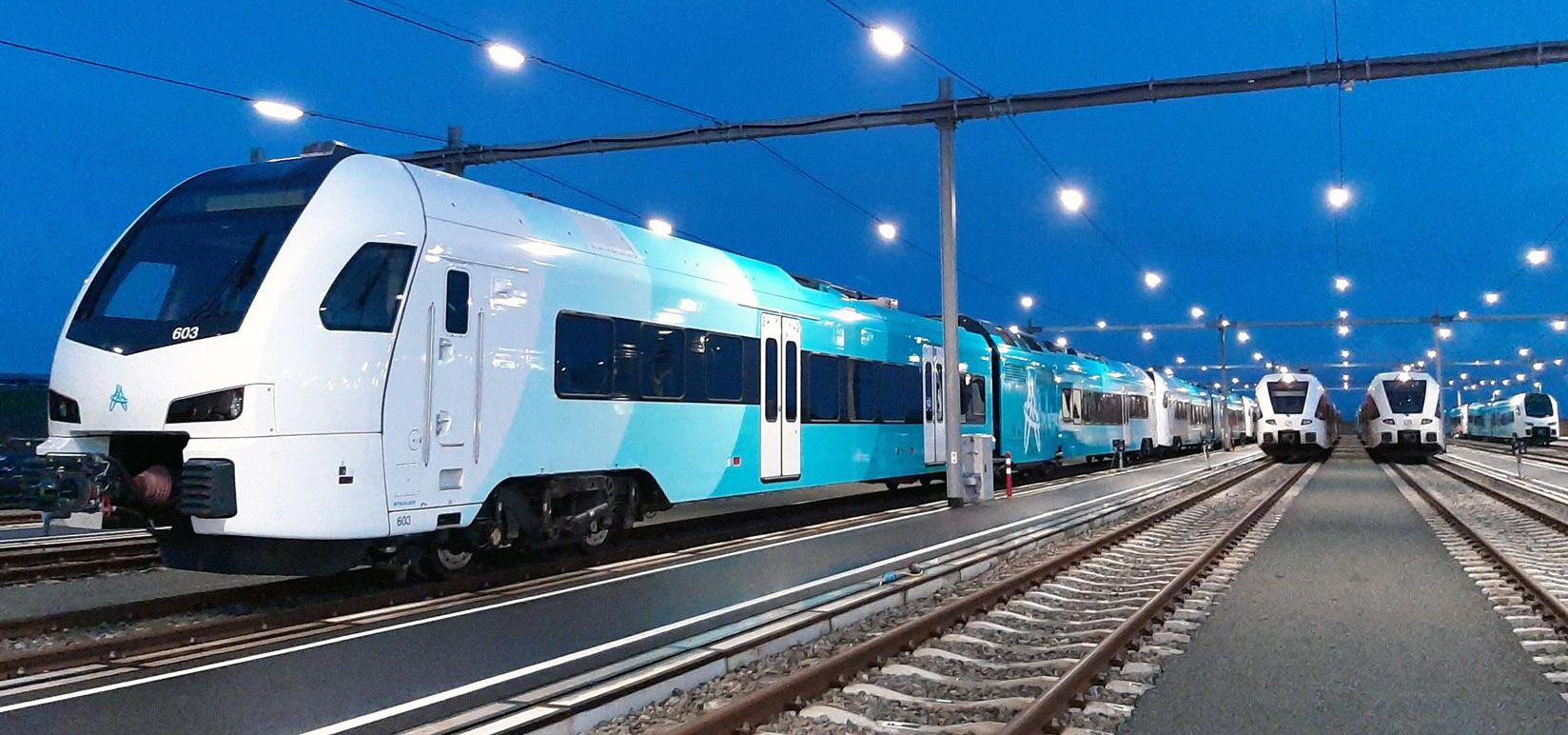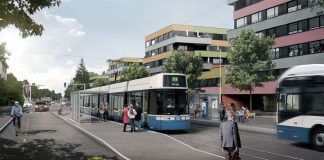Tests mit einem modifizierten dieselelektrischen Triebzug von Stadler zeigen, dass Züge auch auf nicht elektrifizierten Strecken allein mit Batterien betrieben werden können. Dieser Erfolg unterstreicht die Nachhaltigkeit von Stadler und ist ein grosser Gewinn für die Kunden und die Gesellschaft insgesamt.
Der erfolgreiche Abschluss der Batterietests an einem modifizierten dieselelektrischen Triebzug des Typs WINK für Arriva Niederlande zeigt, dass diese Züge emissionsfrei und ohne Dieselgenerator fahren können. Dies unterstützt die Kohlenstoffemissionsziele des Kunden und ermöglicht es ihm, kostspielige Infrastrukturanpassungen zu vermeiden.
Die Tests wurden in den letzten Tagen auf den nicht-elektrifizierten Strecken von Almelo nach Hardenberg und von Arnheim nach Doetinchem im Osten der Niederlande durchgeführt. Der WINK-Triebzug fuhr mit elektrischer Energie (1,5 kV Gleichstrom) aus der Fahrleitung und nutzte die Batterien zur Überbrückung nicht elektrifizierter Abschnitte.
| Komplette Medienmitteilung von Stadler in englischer Sprache: |
|---|
| Tests completed on a modified Stadler-built diesel-electric multiple unit demonstrate that trains are able to operate solely with batteries, on lines that are not electrified. This success underscores Stadler’s sustainability credentials and represents huge benefits for clients and society overall. The successful completion of battery trials undertaken on a modified diesel-electric multiple unit built for Arriva Netherlands shows that these trains can run emission-free, without the use of a diesel generator, supporting the client’s carbon emission targets and enabling it to avoid costly infrastructure changes. Tests were completed over the last few days on the non-electrified lines from Almelo to Hardenberg and Arnhem to Doetinchem, in the east of the Netherlands. This particular train runs with electric energy 1.5kV DC from the overhead line and uses the battery to bridge non-electrified sections. The use of battery power enables trains to run independently on non-electrified lines and provides a more sustainable alternative to diesel. Batteries are used to power a train and can capture energy while it is braking. They can be charged from electrified lines or at designated charging-points on a network. Battery trains produce fewer carbon emissions than diesel vehicles and are a very attractive alternative to them. They offer a fantastic solution for non-electrified lines, eliminating the need for costly infrastructure upgrades for transport organisations and governments. Stadler has sold around 300 trains and locomotives with traction batteries in ten countries, including more than 110 FLIRT Akku for operation in three regions in Germany. In tests conducted last year, the battery-powered FLIRT Akku travelled more than 220km in battery-only mode, the longest distance on record and documented in the book of Guinness World Records. Stadler is currently building the first hydrogen-powered train ever to run in the US, ordered by the San Bernardino County Transportation Authority. Dr Ansgar Brockmeyer, Executive Vice President Marketing & Sales and Deputy CEO of Stadler, commented: «These trials highlight the role that green technology can play in de-carbonising our world and bring us one step further to creating a truly green railway. Working closely with our clients, Stadler is committed to developing innovative ways of making the industry more sustainable, providing attractive and efficient rolling stock, to encourage modal shift for both passengers and freight.» |


